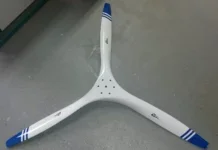Van’s Aircraft has, after many months of testing and evaluation, released a series of documents that are the result of hundreds of fatigue-test coupons and countless hours of data examination and reduction. The information comes in both long- and short-form versions of its technical analysis of the effects of defects in laser-cut parts on airframe strength and longevity. KITPLANES editor at large Paul Dye joins James Clark, Steve Smith and Vic Syracuse in breaking down the information and putting some of the findings in real-world terms.
Bottom line: Van’s data shows the laser-cut parts are no more likely to suffer fatigue cracking than punched parts, but there’s a lot more to the story as our quartet of experts will explain.














Is Vans going to continue to manufacture Laser Cut Parts in aluminum sheet metal?
It’s our understanding that Van’s is no longer using laser cutting for primary aluminum parts. We’ve asked for clarification on that.
I can remember reading an old issue of the T-18 newsletter, where builders were seeing cracks around holes made with the Whitney Punch. They brought it up to John Thorp and he decided they were insignificant. And wasn’t sure of the cause. It seems the dimpling of the metal, then the pressure of the driven rivet, seems to cause the crack. And somehow the punching of the hole seems involved in it as well. I don’t remember reading this occurring with drilled holes. I don’t like cracks, so I’d do whatever was needed to prevent it, Even if it meant drilling all the holes to avoid it.
I cannot believe that the metallurgy changes of the aluminum around the perimeter of these laster cut holes is not a potential issue. There is a reason that welding aluminum structures is not done in aviation – brittle zones are inevitable. That they even pursued this hole making method is baffling.